If you have a product that is a lower ticket item, it can be a challenge to run an affiliate program. The commissions are low, the margins are small, and there’s usually a lot of competition. So how do you get your program to stand out and keep your affiliates excited with low ticket offers? That’s what today’s episode is all about!
Click Here for The Written Transcript of This Episode
NEW EPISODE: “Book Launch Party: An Interview with Matt About Turn Your Passions Into Profits” Listen here now!
Links Mentioned in this Episode
How to Determine the Right Affiliate Commission
The Future of Affiliate Marketing
How Non-Profits Can Use Affiliate Marketing
First Click or Last Click – Who Gets the Credit?
The 3 C’s of Successful Affiliate Programs:
TEXT ME: +1 (260) 217-4619
Don’t Miss An Episode – Subscribe Below
Previous Episodes of The Affiliate Guy
The Simple Habit That Expands Your Influence with Jeff Brown
How to Stop Procrastinating Once and For All?
How Heidi Easley Finished Top 3 in a HUGE Affiliate Promo
The Only 5 Reasons People Subscribe or Buy
Think You’re Not an Expert? Think Again!
Replay: Overcoming Fear to Find Your Calling
The Simple Habit That Expands Your Influence with Jeff Brown
In this podcast, we talk a lot about our clients and we talk about our experience with running what are usually higher ticket items. Affiliate programs that are maybe for digital courses that are $500, $1000, $2,000, but I’ve also worked with companies like Shutterfly and Adidas, other programs where the average order size is under a hundred bucks. The average order size Shutterfly, the average product at Shutterfly is well under a hundred dollars. Greeting cards for five bucks, a photo album for 30 or 40 bucks. Adidas, I just bought a bunch of products. They were on sale admittedly, but I have a really hard time finding shoes that fit me right. Adidas is like the only brand where I don’t have to special order them.
I found these shoes the other day and tried them for a couple of days and went back and cleaned the place out. I think we got four or five pairs now. I mean, it’s enough shoes hopefully that will last me about three years, which is awesome. And I’m just here enough, I found more, I’m going to buy them. I’ll have 10 years’ worth of shoes because it’s so hard for me to find them. These shoes are like 40 bucks, that’s, these are lower ticket items.
We’re going to talk today about the difference between high and low tickets to start with both from an affiliate perspective and from an affiliate program perspective.
Then I’m going to share, I think I’ve got 10 things that you need to do to run a lower ticket affiliate program. Excited to talk about that today. So let’s talk about the difference first of all between a high ticket and a low ticket affiliate program.
Products that say more than $500 versus products that are under a hundred, 200 bucks, the supplies are 17 bucks, $27, $37, $47. There’s a middle ground there that we’re not really going to touch on today because basically, you’re going to kind of hybridize the things that we typically talk about with the higher ticket items and the lower ticket item. So from an affiliate perspective, a high ticket means you’re going to make more money in less time as an affiliate.
Your commissions are going to average between 2 and $400 per sale. So you only got to make, let’s just go with 400 bucks. This is on a thousand-dollar product at a 40% commission. We can go higher and say 800 bucks. Let’s just go 500, make it easy math for me, $500.
You only have to make 10 sales a month to make what the average American income is. You only have to sell 10 items and you make $60,000 a year. That’s roughly what I believe the average American household brings in right now last time when I checked.
You only need to make a few sales. You don’t need to drive as much traffic to your offers to make good money. Those are some of the pluses right.
On the minuses, higher ticket items typically come with stiffer competition. There’s going to be more competition and you’re going to be going up against some of the big boys and big girls in the affiliate marketing world.
You’ve got to really master skills like copywriting to get people to take action. You need to incentivize people with bonuses. We talked about that. So just go search affiliate bonuses at Mattmcwilliams.com and you’ll find tons of information about how to put together a bonus package. Why do you need to do those things? Because it’s a thousand dollars product, it is a $2,000 product.
I heard recently, I think I shared this before, probably about 15 episodes ago, but for the average American, if they had a $500 house or car repair, I think it’s like right at 50% of Americans could not write a check to cover that they would have to go into a little bit of debt. They would have to use a credit card to be able to do that. So if they have less than $500 in disposable income, on average, you’re going to have to do some convincing.
You got $2,000 in the bank and you’re selling a thousand dollar course. You’re asking someone to make the decision to take half of their entire savings and invest it into this product. So you better be a good copywriter. Again, I say that’s a minus because that’s a barrier.
You’ve got to get good at that before you can promote it. Now as an affiliate manager, what are some of the advantages to higher tickets? What’s easier to offer big prizes, with a $2,000 course, if you’re pretty sure that someone’s going to sell a hundred of those, it’s pretty easy to offer a $50,000 prize to your top affiliate.
It’s pretty easy with a higher ticket item to say, a $2,000 course or even let’s just go a thousand dollar course. It’s pretty easy to say, if you make 25 sales that $25,000 if they’re going to make $10,000 if it’s a 40% commission, you make 25 sales, you’re getting a $3,000 bonus. It’s easier to offer large commissions naturally, 40%.
Typically most higher ticket items like digital courses, have a lower cost of goods. Now the exception to this would be coaching. Like in our coaching program, Your Affiliate Launch Coach, you can find out more about that by the way, at youraffiliatelaunchcoach.com. We just give our affiliates a $3,000 flat commission.
We typically make between 25 and 28,000 per client in a given year. So that’s a little bit over a 10% commission. That’s pretty average, typically with coaching 10% average, why? Because there’s a higher cost of goods. There’s no shipping or anything like that. I’m not paying out stuff, but it’s a high investment of my time or our coach’s time.
Those are some of the advantages as an affiliate manager. Getting bigger prizes, larger commissions, a lower cost of goods. You can pay out there are usually not really things like margin and factoring in shipping and customer service and all that stuff on any kind of a scale, typically with a digital product. Your customer service costs are going to be about the same, whether or not you have fifty people or a hundred people they’re not going to dramatically go up. Right?
As far as downsides to the higher ticket items, you’ve got to work harder as an affiliate manager, you’ve got to help them, all those things we talked about. You’ve got to acknowledge the competition and help your affiliates find ways to stand out. You’ve got to help them develop bonus packages and help them with copywriting, giving them really good swipe copy, and teaching them how to use it, and teaching them how to promote. You have to spend a lot more time training your affiliates. To me, that’s an upside.
I say, I say, it’s an upside because I love doing that. I love doing that, but it’s a downside because it does take more time. But the reality is that audiences need lower ticket items. You have to have some cheaper products. Like in my world, we recommend $2,000 courses and we sell courses ranging from $500 to $2,000 and we sell our coaching program, which I just said, you’re going to pay between 25 and 28,000 for us to help you build the 7-figure affiliate program. It’s cool and worth it. But it’s a higher investment, but if you’re just starting out, well, you want to know what microphone I use. So we recommend the 70 or $80 microphone. What is the software you use? Well, this is $20 a month. This is $50 a month. This is $999 a month. What are the tools that you bought? I bought this that’s 40 bucks and this one’s 20 bucks. You can get this tool for $20 a month, that’ll really help you.
From an affiliate perspective, the first obvious advantage to promoting low ticket items is that you don’t usually need to do a whole lot of extra work to convince a person to buy the product, or you don’t have to offer bonuses and things like that. A lot of low-ticket items, they’re impulse buys. So it’s easier to sell and by promoting lower ticket items, you’ll usually be able to make more steady sales if you’re promoting good products. If something costs 30 bucks a month or we promote ConvertKit for example, the recommended email service provider that we use is Convertkit. So we recommend them.
I think you can get started with converting for free up to a thousand subscribers, but even after a thousand subscribers, I think you’re gonna pay 10 bucks from a thousand to 2000 subscribers and then I don’t even know what we pay, but it’s not a significant amount. I think we pay a thousand dollars a year, a pretty big list.
I think it’s just over a thousand. I don’t know if it’s between $1000 and $1,500 a year. It’s definitely not more than 1500. That’s a pretty low-cost item in the scheme of what we’re getting so when we promote that, though, when you go build your list of 3000 people, 4,000 people, and you’re paying them 20 bucks a month or whatever it is, don’t quote me on that price by the way I’m not entirely sure what it is for 4,000 subscribers, but let’s just say you’re paying them 20 bucks a month and we’re getting a commission on that of $8, your $8 plus another person’s $4 plus another person, $7 plus somebody else’s like us and they’re paying the equivalent of a hundred bucks a month so we’re getting 40 bucks there. Next thing we’re getting $500, $1000 a month just consistently.
Now the obvious disadvantage is that you need to send a lot of traffic to make enough sales to bring home a decent income with a $20 product at a 10% commission, you’re making two bucks so to get to that average American income, you’re going to make 2,500 sales a month. That’s probably not going to happen with most products. Now from an affiliate manager perspective. Well, the lower cost means lower commissions.
It’s the converse of what we talked about earlier with the higher ticket items. Secondly, it’s harder to find a margin. It’s harder to find margin. What I mean by that is let’s look at it, I’m going to pick something on my desk here. Okay. I’ve got my coffee mug here. Now, this mug is a Zig Ziglar coffee mug. I think it was like 25 bucks.
Zigs company actually sent me a bunch of these. I got it for free, but I think they sell them for 25 bucks. Let’s just say, it’s not a special mug. It’s just a regular good coffee mug. This thing has kept my coffee warm for the last three hours. I still got like three more sips to go, so it’s 17 bucks.
I don’t know how much this cost to make, but let’s just say, let’s get to Yeti. I don’t know, maybe they sell for 20 bucks. We’ll go 20. Even, let’s just say it really does cost $5 to make. And then on top of that, they’ve got to have either the machinery or the people who pack it and put it in the thing.
Let’s just say that it costs a dollar per unit. Well, already right there, we’re down to a $14 margin on the $20 product. Sometimes though this is probably a bad example, sometimes you have a product that costs $20 and it costs $12 cost of goods and then another dollar. And then you’ve got to factor in things like, okay, what if it comes cracked?
And there’s customer service, every unit they sell is, let’s just say 10% of people have a customer service issue. So that means every hundred units that you’ve got to account for the fact that you’re going to spend 150 minutes on the phone, things like that factor in what does that cost? So maybe you’re at 10 bucks on a $20 product,
you offer a 40% commission on that. You’re only making $2 as the company. It’s harder to find that margin with these lower items, there’s often a lot of competition in the niche with other programs, including Amazon, which is huge. When you have a lower-priced product, odds are either your actual thing or a very similar product is on Amazon and that’s really hard to compete with.
Lastly, it’s just not as exciting, typically coffee mugs, commodity items, shoes, clothes, it’s not as exciting from an affiliate perspective as a $2,000 product thousand dollar thing, lagging a lot of times they’re commodity items so they’re just not as exciting.
From an affiliate perspective, the question of course is should you promote high or low ticket products? As you can see, both low and high ticket products have their advantages and disadvantages like don’t discount low ticket products just because they pay a small commission. If they serve your audience, then it’s a good product to promote.
When I promote this microphone, I don’t know. We sell like two of these a month and I make like $5 and 75 cents, 12 bucks, maybe on the high end. I mean, over the course of an entire year, it’s barely going to pay for a meal at Ruth’s Chris for just me, maybe for me and my wife actually, no, there was only 200 bucks. So it’s not even going to pay for that. Right? It’s not a huge thing. I don’t go out of my way, but if somebody says, Hey, what microphone do you use? I tell them, go to Mattmcwilliams.com/toolbox, click the link.
You can find the microphone there, I don’t discount this just because of the small commission. I’m promoting a good offer that converts really well and I’m serving my audience. The final answer there is an affiliate is you should promote both. As an affiliate manager, your job is to get potential affiliates who might be adverse to promoting low-ticket items. To see that, to see the value in doing both.
This is not an either-or it’s a both. It’s not, I only promote high ticket items. What about lower ticket items so that you can reach some people, you can turn them into buyers. If somebody buys this microphone through me, they’re a buyer. Now we have a connection that’s gone to the next level and they’ve spent $70.
Why won’t they spend 500? Why wouldn’t they spend a thousand over time? So what are some of the things that you need to do to run a low ticket affiliate item? I’m gonna share 10 things that you need to do. If you’re going to run a successful low-ticket program where you’ve got a product that’s under a couple of hundred dollars, you need to follow these 10 things.
1) Follow the Basics:
You still need to run the basic playbook. All of the basics still apply. The things that you need to provide your affiliates, we got an episode coming up on that. You still need to teach your affiliates. You still need to coach them, those three C’s that we talked about. If you miss those, go back and listen to the series. I did the three C’s of successful affiliate programs, and I talked about the contest, communication, and coaching, and followed the basics. Okay. If you do nothing else, none of the other nine things, I’m going to suggest here, follow the basics.
2) Go as High as You Can on Commissions:
I’m going to link to a video that I did for a client years ago on how to determine the right affiliate commission. I’m gonna put the link in the show notes. I’m not going to go through that. But the basic process is you need to be competitive in your niche and you need to go as high as you can that fits the others. In the video, I walk you through it. So it goes as high as you can.
If you’re at 20% and your competition’s at 25%, get up to 25%, I’d rather you get more affiliates and more action, more sales, and lose that 5%. Because again, you’re going to, oh, I’m paying 5% more than you, but you’re paying 5% of something versus 0% of nothing or making a hundred sales a month of this low ticket item at 20% and we can make a thousand at 25% or 2000 or 5,000 or a hundred thousand. That’s worth it. So check out that video. It’s going to walk you through step by step, how to set up your commission and get the perfect commission.
3) Position Your Offer as a Lower-priced Alternative:
If this makes sense in your niche, if your product is $40 and your competition is $200 and $500, this gives their audience options. Maybe it is a cheaper version. Maybe it’s a cheaper product. I will give you an example. The way my studio is set up. I use a podcast, boom, mic arm. I think it might’ve cost me $13. You can go out and spend hundreds of dollars on these things.
I didn’t need the hundreds of dollars version. It wouldn’t even work for me. I could say, Hey, if you’ve got a certain setup and you want the best of the best it does all these fancy things, go spend $300 or pay 13 bucks, here’s an option for 13 bucks. This works great with comparison sites and reviews sites and resources pages where I do this a little bit on my resources page, where I’m like, Hey, here’s the premium version. It’s a thousand dollars a month. Here’s the cheap version. That’s $20 a month and here’s the middle version. That’s a hundred dollars a month.
So find a way to position your offer as a lower-priced alternative. It doesn’t even need to be the exact same thing. A boom mic is a boom. What are these called boom arms? Or I don’t know, whatever Mike microphone, alarm, whatever this thing is called here, attaches to my desk and I can swivel it around and all that stuff. I can move it really, really close or really, really far from my mouth with just a little flick of my wrist, whatever this thing is called. But maybe it’s something where they’re actually slightly different products.
I’ll give you an example of that, you have a product like a ClickFunnels that does like a thousand different things, but then you’ve got lead pages that kind of just does really a couple of things. It doesn’t have all the same features and really doesn’t even do funnels, but all I need maybe the person needs to start with is a simple sales page and an opt-in page. Basically, I don’t know, whatever 50 bucks, a hundred bucks a month, you can get it versus 300 bucks a month. So position it as a lower-priced alternative.
4) Be Smart with Your Contest and Prizes:
With low ticket offers affiliates aren’t looking for these massive hundred thousand dollar contests, right? But a little something, something goes a long way. If it’s a $50 product and you’re offering a 20% commission, it’s a $10 commission. Let’s just say that you’re basically splitting the margin. So you make 20 bucks, you have a $30 cost of goods. You make 20 bucks and you’re basically splitting that. Based on that. If you make a hundred sales you’re going to get a $200 bonus or something, or your top affiliate this month is going to get a thousand dollars, and just be smart. It really comes down to numbers, what can you spend?
I would rather you be a little bit low on commission with some good incentives and room to give bigger affiliates, a higher commission room to eventually raise your commission than going high and not having any room to do any of that. You can always raise commissions and it is really, really hard to lower them. Your affiliates will get really upset, even irrationally sometimes. Let’s just say we’re at 25 and our best competition’s also at 25, but we lowered a 20 they’ll leave and go to the other one. Even if they might make more money promoting you because you convert better or whatever.
5) Stand Out in Ways Beyond Commissions:
If you really just don’t have the room to go to 25 when your competitors are at 25, stand out in other ways, I’ve mentioned earlier the three C’s right? Communicate, make your affiliate program super fun. Contests, make it super fun with the contest. Maybe you can’t give away tons of money in the contest, but you can say, Hey, you know what? Every quarter, our top five, we’re going to get together and we’re going to do a mastermind. So you want to be in that top five. Every month our top affiliate, we’re going to give you some product so that it doesn’t cost quite as much money as may be giving away money. I don’t know. But stand-out ways to that they’re super fun.
Coach them, I mean, if you’re the affiliate manager, that’s helping me make more sales, even if you’re a little bit lower on commissions, I’m going to remember that I’m going to stick around because I don’t want to miss your coaching every month you’re doing a webinar and you’re sharing strategies with them. That’s huge. That is huge. That is a reason to stay. So keep giving your affiliates reasons to stay.
6) Build an Army:
This is like..gosh! I shared this before about the future of affiliate programs and how it’s building an army of small, medium, and a few large ones building this army of affiliates. I’ll link to that episode in the show notes. But you have got to expand beyond your personal network. You’ve got to build an army of affiliates, affiliates that you don’t know, small affiliates to make one sale a month to start with, affiliates that aren’t even making any sales to start with. You’ve got to expand. If you’re going to be successful with a low-ticket product.
7) Non-traditional Affiliates:
I want you to consider working with some non-traditional or maybe some affiliates that don’t want to work with these types of affiliates with higher ticket items. I don’t talk a lot about them because most of you have higher ticket offers typically. But coupon sites, co-reg sites, other types of affiliates, you might not be using. Co-reg sites are people who are promoting other products, and then they promote your offer in conjunction with their offer.
So let’s say an affiliate is promoting homeowner’s insurance, and if it’s a new home purchase, that’s one of the questions we ask. They might want to include things like, Hey, do you want to get information on mortgages? What about if it’s not a new purchase might want to get an option on learning more about refinancing. Maybe you’re promoting someone else’s free training. And then the person also one clicks to offer to opt into your webinar. For example, there are all sorts of ways that you can do this. You can have other companies that may do order bumps and their order bumping your offer.
Now the key to this type of thing to co-reg doesn’t work typically in retail as much, make sure the people that are opting in for the initial offer are a good fit. Otherwise, it won’t work. And you’ll end up with a bunch of junk leads, a bunch of junk sales, or just a really low conversion rate.
Again, you don’t want to offer people who are applying for homeowners insurance on an existing home they’ve owned for years. You don’t want to offer them a mortgage that doesn’t make any sense. You don’t want to offer a new purchase refinancing that doesn’t make any sense. You’ll just get crappy leads, coupons, affiliates, okay. This is exactly what they sound like.
These are affiliates who promote deals and coupons to their audience. They catered to customers who are looking for a discount or sale. People will do irrational things to save $2 on a $17 purchase. We know that, right? We’ve all done that my wife is like the queen of this. And I love her for it because she saves us thousands of dollars for a year. But to be clear, if you don’t currently have coupons or discounts, I’m not saying you need to create coupons just to use this type of affiliate. Some products should never be discounted.
I don’t believe $2,000 and 1000 or $500 courses should ever be discounted. But retail products are so common that if you’re already doing it, or you think you want to do it, then you definitely want to use these types of affiliates. The key thing here, you want to make sure these types of affiliates don’t steal the commissions from the original referring affiliates. It’s your job to ensure that both affiliates get credit for the sale. It’s long and complicated. They don’t have time to get into it, but I’m going to share a video in the show notes that actually will walk you through. I think the title of the video is like, there’s a better way than first click or last click. It kind of walks you through what to do with coupon sites.
a) Loyalty Affiliates:
These can be a very effective type of affiliate. They’re called loyalty affiliates because the people that they reach are extremely loyal to them. So companies like Ebates, I think that’s the one that my wife uses like she goes through and books a hotel. Let’s just say, we’re going to spend a thousand dollars on a hotel for three or four nights and we’ll get back like 90 bucks. Cool. It’s like free money or 50 bucks.
In this case, Ebates is the affiliate. So they make money by encouraging loyal subscribers to purchase through them, with the reward being that the customer gets a percentage back. And so essentially what they do and I’ve worked with tons of loyalty affiliates, like Ebates, they get 5% of the purchase. So they get a 5% commission or a 10% commission, whatever it is, we’ll just go with five and they’re going to take half of that and give it to the customer. So you go buy a thousand-dollar hotel, you’re getting 25 bucks back. Now that’s super easy. You have to monitor these loyalty affiliates to make sure you’re getting a positive ROI though.
If people are just basically using the loyalty site and something, they are going to buy anyway, that doesn’t necessarily make you money. Also similar to coupon sites, you have to be careful that they don’t steal the commission from the original referring affiliate. Now I walk you through that video. So same principles here, but don’t let these warnings scare you. These types of affiliates can be extremely valuable and you just have to manage them, a little carefully.
b) Non-Profits:
Non-profits, charitable organizations, parent-teacher associations, all types of these, we’ve used these very effectively. I mean, I think about Shutterfly’s affiliate program. We did more than 8 million in sales, just through nonprofits in the second year of the program. They use affiliate promotions as a fundraiser. So they tell their organization that a percentage of each purchase, their affiliate commission is donated to the organization.
Basically, it’s super simple. The nonprofits like, Hey, you probably are going to order Christmas cards anyway, here’s our recommended partner. When you purchase Shutterfly greeting cards, we get 13%, you go buy $200 worth of Christmas cards. That’s less than we spend on Christmas cards because we do for our business. So it means you go spend $300 and they’re making $39. So you get like $39 goes to your local pet shelter.
That’s pretty cool. That’s essentially like making a $39 donation. So they’re great for getting your product in front of a captive audience. Usually a slightly higher income. Typically people who regularly support nonprofits are in the low to mid-six-figure range in terms of average income. If you want to know how to work with nonprofits and learn how they benefit and how to use them,
I’m going to put a video in the show notes that walks you through how to work with a nonprofit. The biggest thing I can say, though. You do nothing else, make sure you give them a quote-unquote enhanced commission. They don’t want to be just affiliates, they want to be special partners and know that you care about their success in raising money. So at Shutterfly, our standard commission was 10%. We gave them a 13% commission.
c) Remarketing or Retargeting Affiliates:
All right, the next type of affiliate that works really well with low ticket items is remarketing or retargeting affiliates. Basically, these are affiliates who you basically outsource your remarketing or retargeting to an affiliate and you just pay them on a commission. So ideally you would handle your retargeting in-house. But it’s expensive like you’ve got upfront costs, you’ve got to hire an employee. This might be an option to consider essentially you just pay them a commission to do your retargeting for you. That’s really it.
You’re handing them a very highly targeted list of people to market to. And so you’re typically going to give them a smaller commission, and they’re going to spend the money, but it’s like you think about this again, you have a hundred dollars product. We’ll go with the $50 product. Let’s just say you normally pay 20% commission and these are really highly targeted leads. They might only spend two bucks a sale to make five bucks. You’re going to pay them a 5% commission even a $4 commission. They might only have to spend a dollar or two to make that sale. So something to consider.
d) Second-tier affiliates:
Especially with low ticket items, this is huge. These are affiliates that are going to refer other affiliates to you. We do this, right? We have a list of thousands of affiliates. You are probably one of them and so we make money. When we send out a thing saying, Hey, we recommend this affiliate program, go sign up, go sign up for this affiliate program. We will get paid a second-tier affiliate commission. If I refer three affiliates to a company and they sell $15,000 worth of product, we typically will get a 10% cut of that. We’ll make 1500 bucks is one of the best ways to recruit new affiliates by the way. Definitely, you should be working with second-tier affiliates.
e) Sub-Affiliates:
Lastly, sub-affiliates are affiliates who are a part of sub-affiliate networks. So you’ve got companies who have a network of affiliates who promote offers that the network brings to them. It’s similar to second-tier affiliates. It’s just not as transparent. The second tier or the sub-affiliates do all the marketing and promotion to their list, to their audience. But the master affiliates get all the credit and then they pay out the individual sub-affiliates from their earnings. Listen, sub-affiliate networks have a shady past. I do not do this in lead generation.
I would only do this in retail because you don’t have access directly to the affiliate. I recommend staying away from sub-affiliates if you don’t have a full-time affiliate manager in place to handle the logistics. They can be incredibly profitable, but they have to do a little bit of hand holding and monitoring to be worth the effort.
All right. That was number seven, a little long one and just talking about working with different types of affiliates, the coupon sites, the co-reg, loyalty non-profits, et cetera.
8) Consider working with a network:
We recommend ShareAsale. You just go to Mattmcwilliams.com/ShareAsale. That’s who we recommend as a network, especially if you’ve got lower ticket retail or even a digital product. If you’ve got a high-ticket product, we don’t necessarily recommend working with ShareAsale. But if you’re in a niche that’s already on the network which is probably the case consider working with ShareAsale or another network because that works especially well for lower ticket items.
9) Create Very Short Promo Windows:
Odds are, you got an evergreen product if it’s a low-ticket item, but you still need to do some big pushes throughout the year, maybe once a quarter with lower ticket items, they have to be shorter. No one is going to promote a low-ticket item for two weeks.
Like they want a $2,000 product, right? So do a three day contest just to find the days that work best. Maybe it’s Friday, Saturday, Sunday, maybe it’s Saturday, Sunday, Monday, maybe it’s Tuesday, Wednesday, Thursday. It doesn’t matter. Do a quick five-day contest where you offer maybe an extra bonus or a discount whatever that might be, do something where you’re once a quarter. But again, it’s three to five days where you’re really pushing, pushing hard. Maybe that affiliate with the most sales in this five day window gets this prize or gets a certain amount of money or the top three or things like that.
10) Offer Some Affiliate Exclusives:
We’ve touched on this throughout, actually offering some affiliate exclusives. This is something that only affiliates can offer. You’re not going to find it on your website. If you’ve got it, let’s just go back to Convertkit for example, a pretty low price thing, maybe Convertkit. If you’re listening, offer a training that you only offer through affiliates. So when you sign up this month, you’re going to get training or a free month. It could be a free month. Like you just sign up for a regular program and your second month’s free and then you pay for it after that. It could be that if you upgrade to yearly, this only through affiliates, you upgrade to the yearly instead of 12 months for the price of 10, you’re going to get 16 months for the price of 10.
You’re going to get four free months through this affiliate. You’re going to get some sort of a bonus. It’s like, not only are you going to get this, but you’re going to get the Ginsu knife and the paring knife and the such and such thing and this, it doesn’t have to be like that. But what is it that they’re going to get some sort of a bonus, and these are only through affiliates. So offer affiliate exclusives.
Quick recap:
1) Follow the Basics: Follow those three C’s that we talked about.
2) Go as high as you can on commissions: Check out that video. How to determine the right affiliate commission.
3) Position your offer as a lower-price alternative: Give their audience options.
4) Be smart with your contests and prizes: You don’t need the massive ones, but say a little, something goes a long way.
5) Stand out in ways beyond commissions: Go back to the three C’s. I’m going to put the links in the show notes. We’ll go back to those three C’s, communicate, Coaching, and Contests.
6) Building Army: Check out the future of affiliate programs episodes that I put in the show notes.
7) Non-traditional Affiliates: Consider working with coupon sites and loyalty sites and non-profits and second-tier programs and things like that that may be your non-traditional type affiliates.
8) Consider working with a network: Check out my link to ShareAsale. I’ll put that in the show notes. That’s who we recommend. Not saying you have to sign up with them, just check them out. Maybe have a call with somebody there.
9) Create those very short promo windows:
10) Offer affiliates exclusive things that only affiliates can offer:
That’s how you work with low ticket affiliate programs. That’s how you have success with low ticket affiliate programs. So if you haven’t already yet, make sure you hit subscribe because I have got two amazing interviews coming up. We’ve got one of our regular pieces of content and then a bonus interview coming up. Next episode, I’ve got John Jantsch, we’re going to be talking about the five steps to ridiculously consistent growth. I am so excited. I was on John’s podcast earlier this year.
I’ve been wanting to have him on the show probably for about four years and I finally got him on. So I’m super excited about that. I mean, he’s been around, he’s like one of the originals we’ve been around for like two decades, he’s old. And then I’ve got my friend Dorie Clark. Fun fact, she and I were born in the same hospital in a small town in North Carolina.
We got to know each other and the very first affiliate promo she ever did was our stuff about six or seven or eight years ago. We’re going to talk about how to be a long-term thinker in a short term world. I think it’s super important for entrepreneurs to hear this message. So make sure you hit subscribe. So you don’t miss those interviews.
They’re coming up here soon and I’m excited. I am super excited about those. So I will see you in the next episode or we’re talking about those five steps to ridiculously consistent growth with John Jantsch. I’ll see you then.
Questions?
Text me anytime at (260) 217-4619.
Or…check out some of my free reports to help you get on the right track:
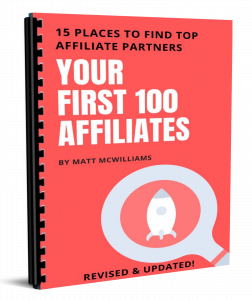 |
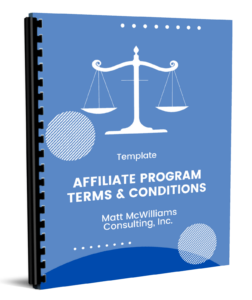 |
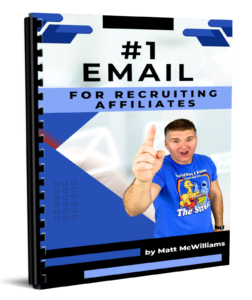 |
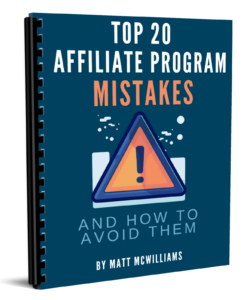 |
 |
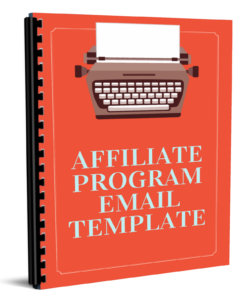 |
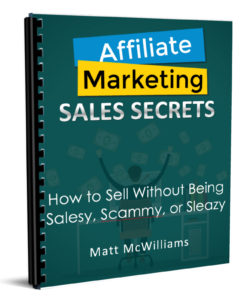 |
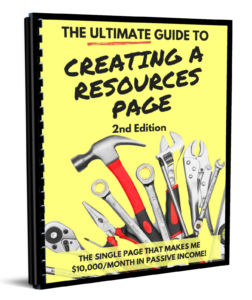 |
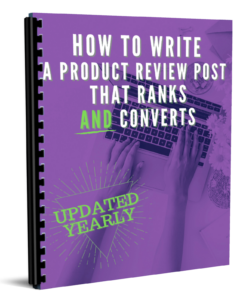 |









Hi Matt.
I am very glad to find your podcast. While some things you described are obvious from my point of view, they are not understood by many trying to get to affiliate marketing as operators, and some things art specific to the point.
I am not an affiliate marketer. I am running the inventors help company Perfect Invention. In an attempt to help one of our clients, my company developed a SaaS “The Startup Video Press Release Builder” https://thestartupreport.net/ which can be only distributed as an affiliate product having into consideration the market size. It is aimed at newly minted businesses and startups and thus cannot be a high-ticket operation.
That’s awesome Mark!